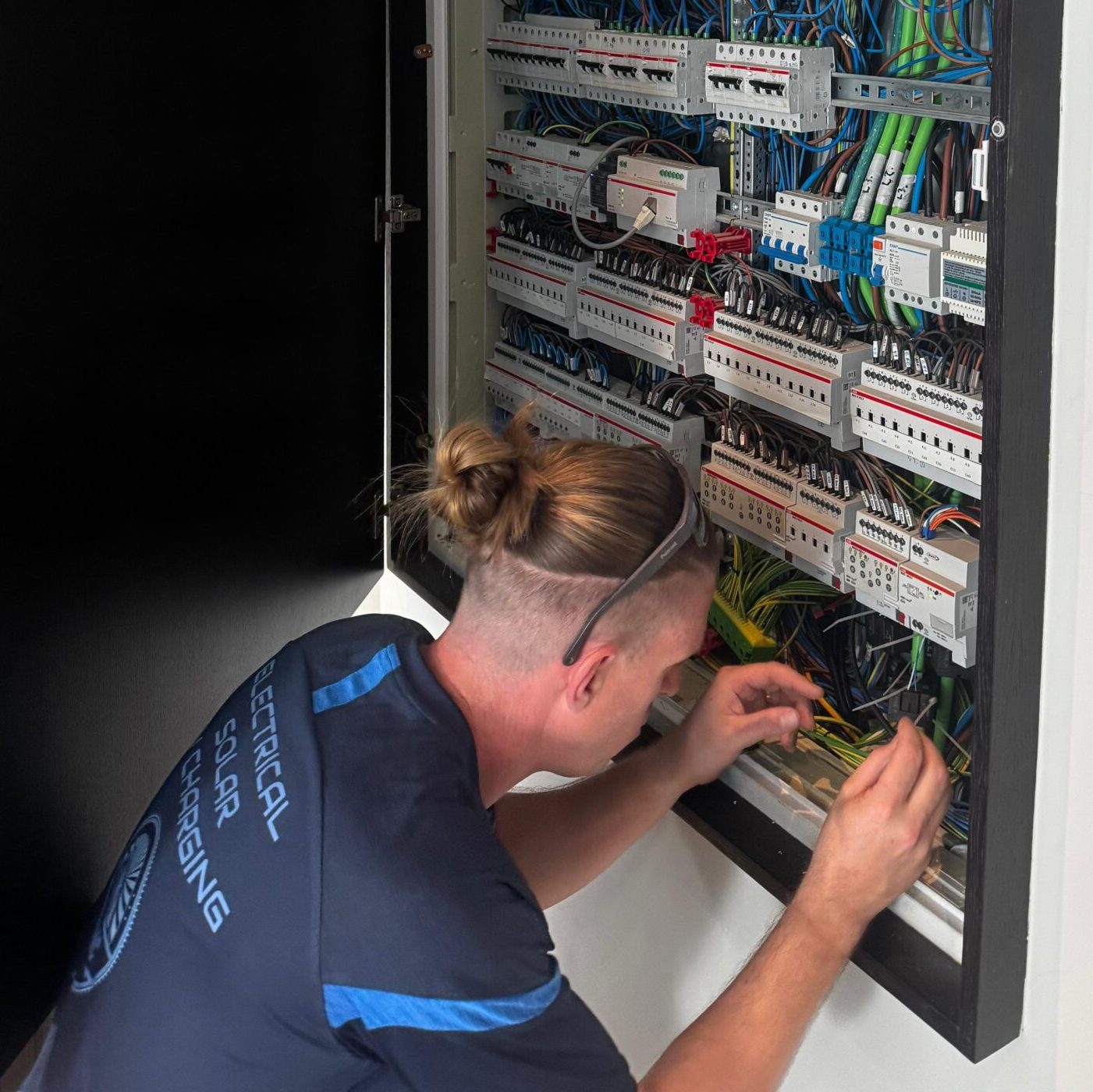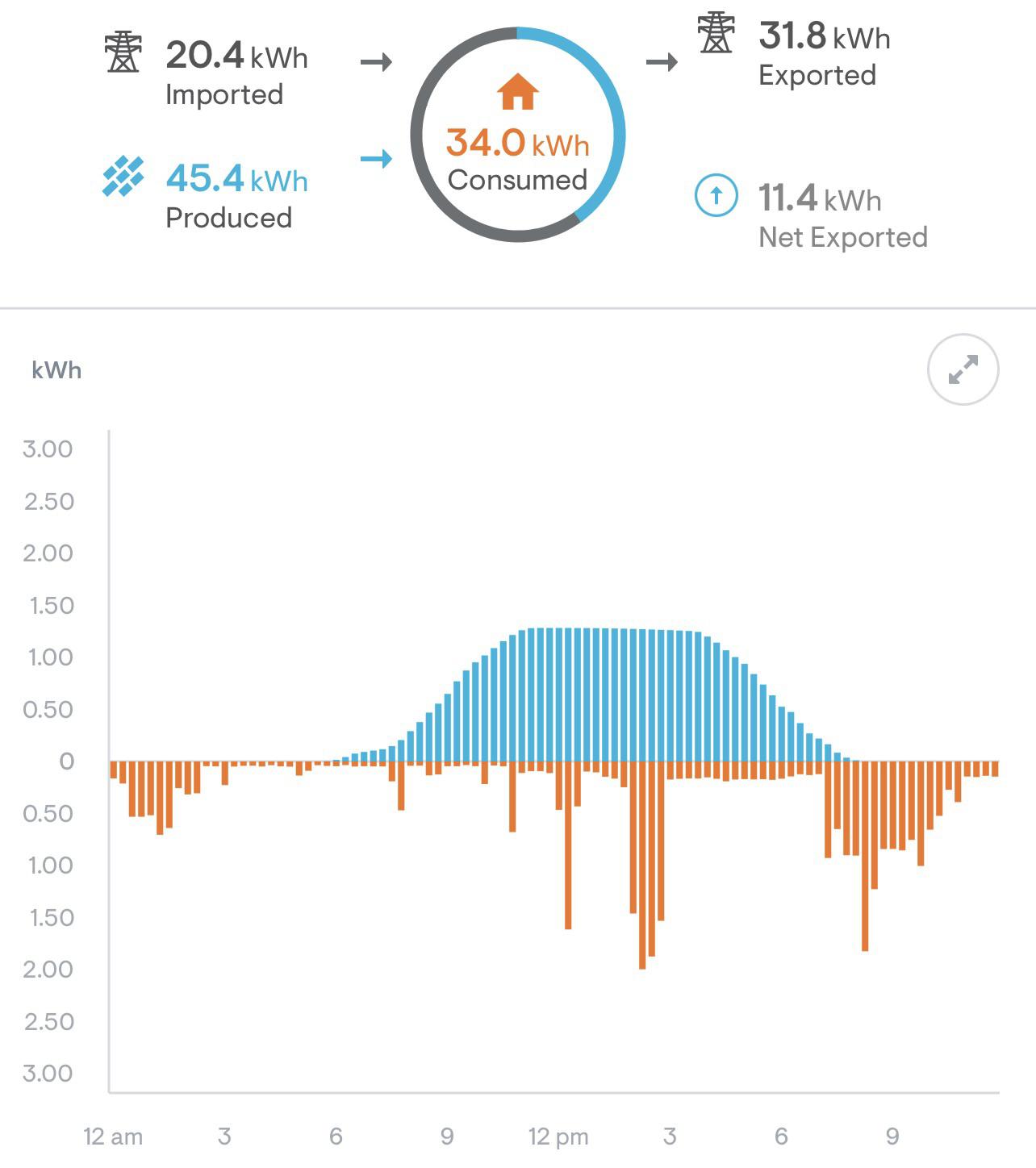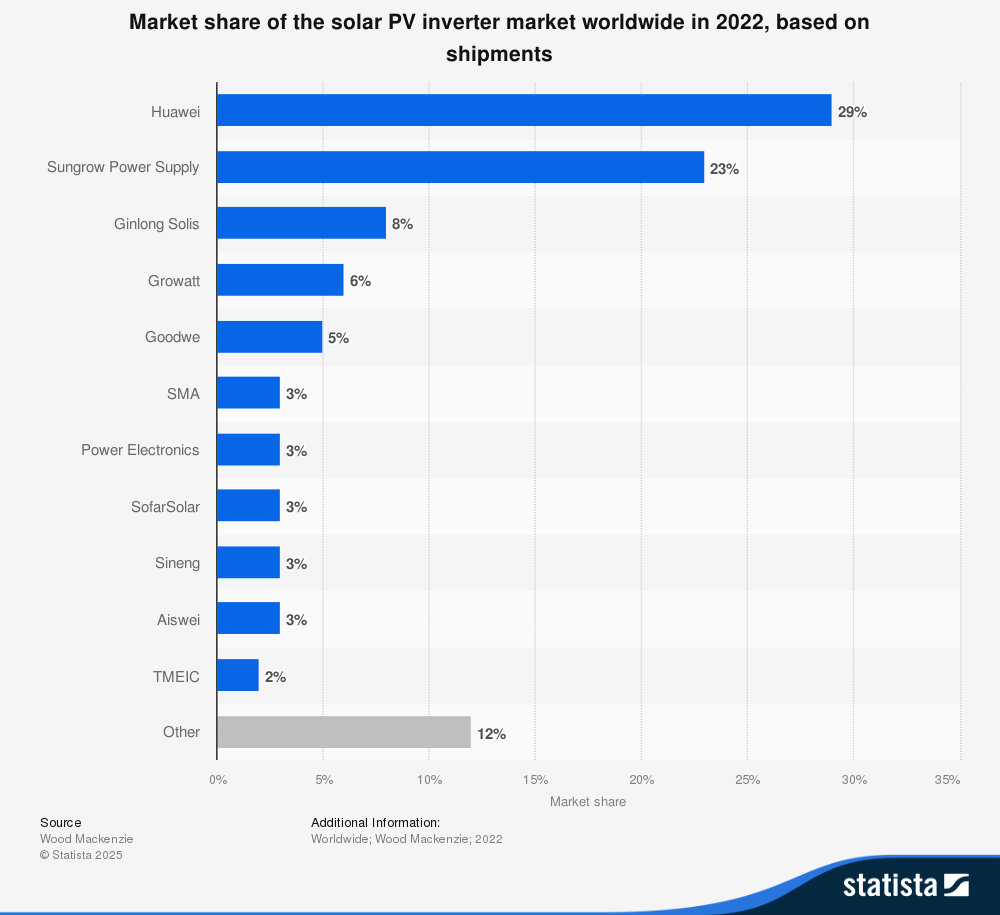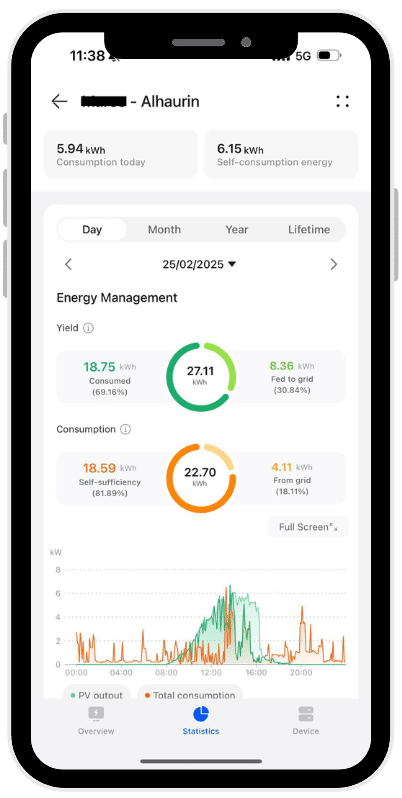
Marc Owen is a senior solar installer and electrician for Marblanc Solar. He has over two decades of experience in the UK, where he received his JIB Gold Card.
One of the most common solar-related questions I see on local Facebook groups is this:
“Is the inverter much the same or are there brands that are considered more reliable?”
It’s a good question to ask, because there are technical details you may not understand at first. And then, there are a few situations where the wrong inverter can cause a nasty surprise down the line.
I want to make sure that doesn’t happen for you.
Below, I’m going to cover the eight main considerations when choosing a solar inverter, explain why we prefer Huawei, and share with you the number one question to ask any installer providing you with a quote.
Let’s get into it!
Marblanc Solar is the top-rated solar installer in Marbella and the surrounding areas on the Costa del Sol in Spain. We offer homeowners a free site visit, drone inspection and a savings estimation as part of our free solar survey.
8 Key Considerations When Choosing a Solar Inverter
First of all, let’s cover the four most important points to consider when choosing a solar inverter.
These may seem obvious…
But, if your installer can’t answer questions about the considerations below, it’s time to look elsewhere!
1. Inverter Capacity (DC-to-AC ratio)
If the inverter is too small for the number of panels you have, you could lose valuable energy during peak sun hours. This is known as ‘clipping’, and you’ll often see it as a flat line on generation charts in your solar app, where your electricity output hits an artificial ceiling.
2. Voltage and Current Compatibility
Each inverter has a specific voltage and current range it can handle safely. If your solar array falls outside that range, your system could underperform, shut down unexpectedly, or not work at all.
3. Warranty & Service Life
Inverters are the hardest-working part of your solar system and they wear out faster than panels. Choosing a model with a decent manufacturer warranty (at least ten years) will give you peace of mind and avoids an expensive early replacement.
4. Efficiency Rating
An inverter’s efficiency rating tells you how much solar power it converts into usable energy, instead of losing it as heat. High-efficiency inverters maximise your return on investment by reducing waste and improving long-term energy output.

Next, let’s cover four more technical points to consider when choosing a solar inverter.
Not all of them may be applicable to your situation.
5. Future Expandability
Some inverters only support a limited number of solar panels and, once you’ve reached that limit, you can’t add more without replacing the entire unit.
Ideally, you’ll want an inverter with some headroom so you can expand your system later, if you feel like it. If you don’t plan ahead, any future upgrade could become a much more expensive job than it needs to be.
For one solar panel installation in El Rosario, Marbella, we installed a 10kWh solar inverter for a 8.1kW system. This is because the client wanted the option to add more panels in future without having to replace the inverter.
6. MPPT Channels (String Design Flexibility)
MPPT stands for Maximum Power Point Tracking. It’s a fancy way of saying the inverter can optimise power from each panel string.
More MPPT channels allow your system to handle panels on different roof angles or those affected by shade. If your inverter only has one MPPT and part of your roof gets shaded, it could drag down the performance of your entire system.
For one solar panel installation in Torre Real, Marbella, we installed a Huawei solar inverter, which allowed for two separate strings. This let us install one array of solar panels on the client’s roof and another string on his carport without shading on one string bringing down the whole system.
7. Smart Monitoring Features
Most modern inverters offer some kind of monitoring app or web portal which lets you see how your system is performing.
Ideally, you want real-time updates and alerts if something goes wrong. Without this, a fault could go unnoticed for weeks or months and cost you money in lost solar production.
8. Future Battery Compatibility
If you think you might want to add a home battery later, make sure your inverter can handle one or was designed to be a hybrid model.
The best inverters are battery-ready or can easily integrate with storage systems. Otherwise, you could end up having to swap out the entire inverter just to add a battery, which adds unnecessary costs.
What Is a Solar Inverter?
A solar inverter is the device that turns the electricity your solar panels produce (called DC) into the kind your home can actually use (AC). Without it, your solar panels can’t power anything in your house.
The Most Popular Brands Of Solar Inverters on The Spanish Market
Huawei is currently the world’s leading manufacturer of solar inverters.
Below, you can see a list of the world’s largest manufacturers in 2022, based on shipments recorded by Statista.

There are many more inverters you may have heard of, such as:
- Fronius
- SolarEdge
- ABB
- Enphase (microinverters)
- Delta
- Ingeteam
- Solax Power
What Are Microinverters?
Microinverters are small inverters installed on each individual solar panel, instead of one central unit. They allow each panel to work independently, which can boost performance if your roof has shade or panels facing different directions.
Some people want microinverters for aesthetic reasons. For example, we installed Enphase microinverters as part of one solar installation in Mijas Golf because the client didn’t want a solar inverter unit visible in the house.
Which Solar Inverter Brand Is The Most Reliable?
Let’s get this out of the way.
In most cases, the brand of inverter isn’t the most important factor when it comes to reliability. What matters more is the quality of the installation itself.
For example, we were once called out to a property in El Rosario where the homeowner already had solar panels installed but they wanted a second opinion. It turned out the installer had used undersized cabling – thinner than the recommended 6mm – which posed a serious risk of overheating and even electrical fire.
That’s why it’s often more important to vet the installer than the inverter brand.
A good installer will size the system properly, use quality materials, and set everything up so you don’t have to worry about a thing. At Marblanc Solar, we handle all inverter configurations for you.
What About Price?
There are a lot of new brands coming onto the market – especially from China – and many of them are cheaper. But I like to use a simple analogy:
Are you the kind of person who buys a Samsung TV… or a HiSense?
Sure, the HiSense might save you some money up front.
But the picture quality isn’t quite the same, and it’s often missing features. Now imagine that playing out with a piece of equipment that runs your home’s power supply for the next 10–15 years.
That’s why, in most cases, we prefer the market leader, Huawei. I’ll explain why in the next section.
What are all the different parts of a solar installation?
A typical solar system includes: solar panels, connectors, cables, fuses, surge protection, and a solar inverter. Optional extras include batteries (for storing energy) and backup boxes (for keeping power on during a grid outage).
5 Reasons Why Marblanc Solar Prefers Huawei
At Marblanc Solar, we mostly install and recommend Huawei solar inverters to our solar clients in Marbella and the Costa del Sol.
Huawei isn’t the cheapest option.
This may just come across like a sales pitch. But, having worked as a qualified electrician for over two decades, and after completing more than 200 solar installations across the Costa del Sol, I can tell you from personal experience, I trust Huawei.
Here’s why.
1. Never Had a Broken Inverter
At the time of writing, Marblanc Solar is over 400 installations in and we’ve never had a Huawei inverter fail.
With Huawei’s track record and solid manufacturer warranty, we’ve seen nothing but reliable performance year after year.
2. Industry-Leading Features & Upgrades
Huawei’s safety and smart tech features are a game-changer, especially for high-end homes on the Costa del Sol.
One new feature they call ‘Safe Roof’ lets the inverter monitor the temperature of the connectors on your solar panels. If it detects anything out of the ordinary (like overheating) it shuts down the system automatically, preventing fires before they start.
Unfortunately, fires do happen.
Costa del Sol residents will remember the electrical fire at the Miramar shopping centre in Fuengirola. This fire started because the MC4 connectors overheated and caught fire.
Huawei’s system is designed to stop that from ever becoming a risk in the first place.
What are connectors?
Connectors (often MC4 connectors) are the small plugs that join your solar cables and panels together. Huawei’s system monitors all four connectors per panel, and if even one overheats, it can shut down the whole string instantly for safety.
But it’s not just about safety.
Huawei’s latest upgrades now allow for full-home backup power thanks to their SmartGuard system, the most powerful form of backup box. It gives you up to 63 amps of backup power across three phases, which is more than enough to run an entire villa seamlessly if the grid goes down.
Most other inverters only let you back up a few appliances, but Huawei lets you back up the whole house.
Other inverters will most likely completely shut down during a power cut and before receiving power from the backup box. Huawei’s inverter will shift to backup power within milliseconds, so appliances like your computer or WiFi won’t turn off at all during the outage.
3. Easy-to-Use App
Huawei’s inverter comes with its own app, and it’s pretty decent.
The Huawei app lets you see how much electricity you’re generating and using, so, if you’re overproducing, you can make the most of it by running appliances like your washing machine. It will also notify you when you’re over consuming as well.
Once the system is set up, there’s not much to configure – and that’s the point. The app is simple, clear and gives you full visibility, without overwhelming you with settings.

4. Straightforward to Install
We’ve installed all kinds of inverter systems. I’ll be honest, some are a real pain to work with.
One older brand we tried had an awkward wiring layout, clunky components and involved a much longer, messier installation process.
Huawei, on the other hand, is well-designed for installers and even the surge protection is built in, though we often mount it externally for easier access. It’s a cleaner install, and that saves everyone time (and money).
5. Aesthetics
Looks do matter.
Huawei inverters are well-designed, sleek and just look more modern compared to some of the clunky white boxes we’ve had to mount in the past.
If you’ve spent time and money on a beautiful home, the equipment you install should match that standard, and Huawei ticks that box.
The One Question to ALWAYS Ask Your Installer
Earlier, I walked you through some key considerations when choosing a solar inverter, depending on your needs.
But there’s one more crucial detail.
Even if you already know which inverter you want – or you’re choosing from a shortlist your installer has provided – you need to ask your installer this:
“Is your team experienced with this specific inverter?”
The installation process can vary quite a bit between brands and a team that’s unfamiliar with your chosen inverter could make mistakes or take longer to set things up properly.
That’s one of the reasons I personally recommend Huawei. Not just because it’s a great system but because we’ve installed so many of them that we know them inside out.
That experience matters.
Get a Free Solar Survey From Marblanc Solar
At Marblanc Solar, we believe in doing things transparently.
That’s why we offer a completely free, no-obligation solar survey to any homeowner considering solar in Marbella, or anywhere else on the Costa del Sol.
When you book a survey, we send a qualified survey engineer to visit your home in person. We’ll carry out a full inspection of your roof, using an aerial drone to assess the health of your roof and the available space.
Once we’ve completed an analysis back at the office, we’ll return for a second visit with two or more system proposals. Using one of our laptops, we’ll walk you through each proposal, using our professional design software, called Pylon, and showing you how your installation costs and long-term savings are affected by things like:
- Adding or removing panels
- Switching roof sections
- Including a battery
You’ll see everything clearly – no guesswork, no vague estimates.
We’ll then generate an instant, itemised quote on-site, using our software, and we’ll send it to you before jumping in the car. No waiting days or weeks.
This survey is 100% free, with no obligation to proceed. It’s designed to give you the information you need to make a confident, informed decision about whether solar is right for your home.
Ready to see what’s possible?
Schedule your free solar survey
The free solar survey includes: home visit, drone inspection, 3D shading analysis, savings estimation and custom proposal. Fill out the form and we’ll get back within one working day.
Free solar survey
